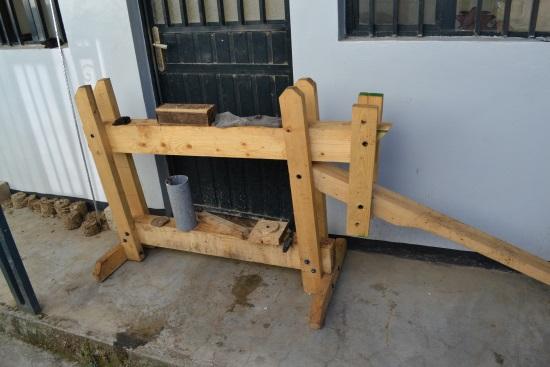Development is not an easy subject to write about since it is a field imbued with several question marks; like every other economics-related issue, it is something that we understand in retrospective, and it is very hard to predict what will be the impact of our actions. In this blog, I'm going to write about some of my modest experiences working in the development field in Ethiopia.
A little background information: the field of International Development is constantly in fluctuation and has changed a lot since I first became involved; during the 1950s, local governments were seen as the key to development given their power to influence civilians through top-down solutions such as building infrastructure and industries. This did not succeed due to factors such as corruption ineffective governance as well as the need for long-term maintenance. The 1980s brought along the spirit of neoliberalism, with the next solution deemed as having to involve the free market such as pursuing macroeconomic stability, open trade according to the comparative advantage of each country, and privatization in which the agenda was set by developed countries in exchange for World Bank grants. The belief was that the outcome of these actions would be GDP growth, which would then lead to poverty reduction. However, this strategy proved inefficient and raised socio-economics gaps. The rich became richer, and the poor? Well, they remained very poor. Today, after many antidevelopment movements and significant critiques, development discourse has turned to sustainable and local assets-based programs, bottom-up solutions, a human focus and a capabilities-enabling approaches. This is where I come into the development picture, and this is how my fiancé, Hagit, and I, came to work in Gondar, Ethiopia.
We intern in a small organization called Yenege Tesfa that works with street children in Gondar. There are about 4,400 orphans and vulnerable children in Gondar, and 800 children who sleep on the streets every night. They live in extreme poverty that matches the UN’s definition of less than U.S. 1.25$ a day.
We came here to work with the community, and effective community development has three qualities: it is assets-based, internally-focused and relationship-driven. According to this theory, I began my work in evaluating the organization’s assets according to the Assets Based Community Development approach invented by Kretzmann & McKnight. Every organization has assets: personal assets, civil society assets, local economy and institutions, which take part and contribute money and physical assets. Our organization is blessed with many assets and relationships: professional staff, skilled volunteers, partners such as the University of Gondar, a free of charge territory from the government and much more. Assets-based solutions are sustainable because they depend only upon things that are available in the community. In addition, I met with the organization stakeholders and asked them what they think has to be changed in their community. Bottom-up, internally-focused solutions are a very important aspect in this growing field of community development.
After the evaluation, I started working with two of the organization’s staff on ideas of how to utilize a specific local asset. We found out that there is a vast amount of organic waste that is being thrown away without utilizing its benefits. Our goal is to use it as an alternative source of energy for cooking that will be more environmentally friendly and more economical for the community. Today there is vast usage of charcoal for cooking in Ethiopia, which is harmful for the environment (6 kg of wood are needed for one kg of charcoal), very expensive (160 ETB per sack) and not fully utilized, due to the low performance of the traditional cooking stove. We use organic waste for the creation of Bio Fuel Briquettes, creating them with a simple and primitive pressing machine that we build. Along with the briquettes, we are trying to promote the usage of a new stove that will utilize the energy of the charcoal / briquettes and maximize the energy production of every household.
We have an opportunity to address some of the community’s needs (high expenses, pollution) and to create a sustainable source of income for the organization and a group of single mothers that will manufacture and sell the inexpensive and environmentally-friendly briquettes to the community. All that with a sustainable resource that is not dependant on developed countries. Finding local assets and local partners was the most important stage for this project’s success and now we need to work hard and make this opportunity a community success
.

The organic waste and the pressing machine
Guy Cherni is an ID² alumni, and an MA student in the Glocal Community Development Studies program at the Hebrew University of Jerusalem. He is interning in Gondar Ethiopia in the Income Generating Activities program of a local NGO by the name of Yenege Tesfa.
Me with a Bio Fuel Briquette
No comments:
Post a Comment